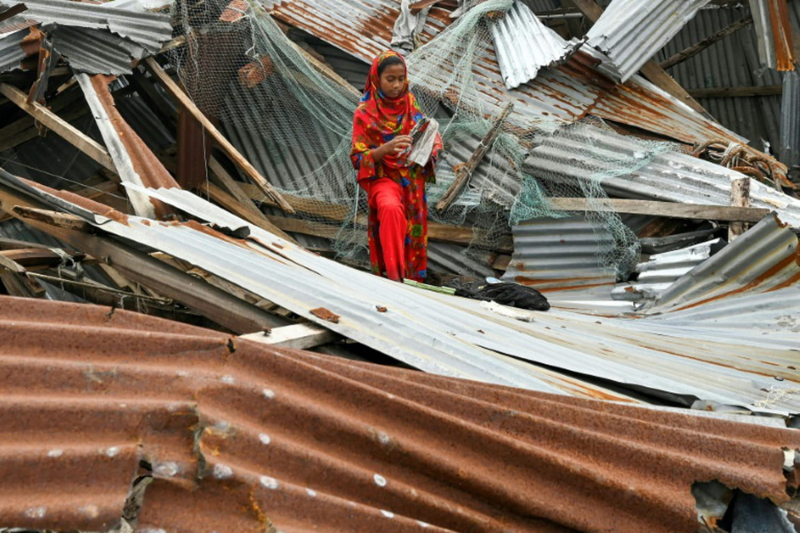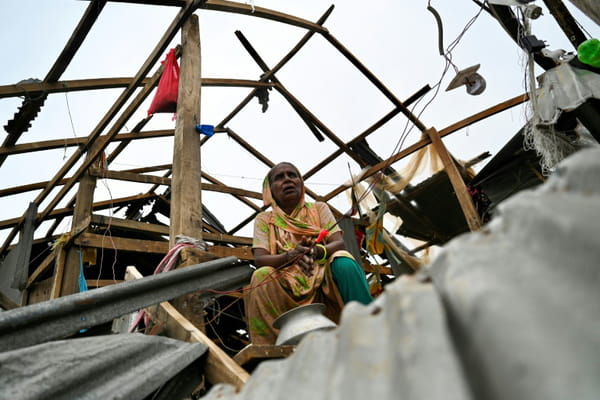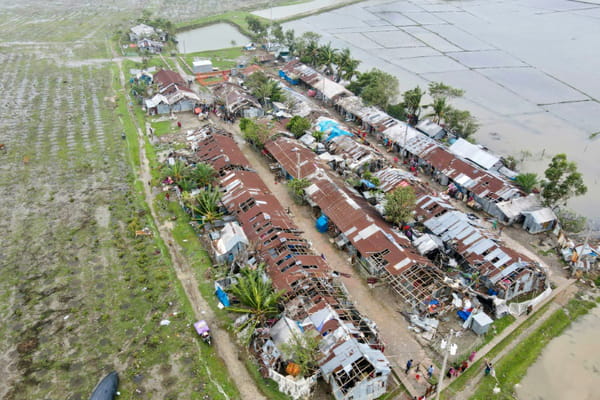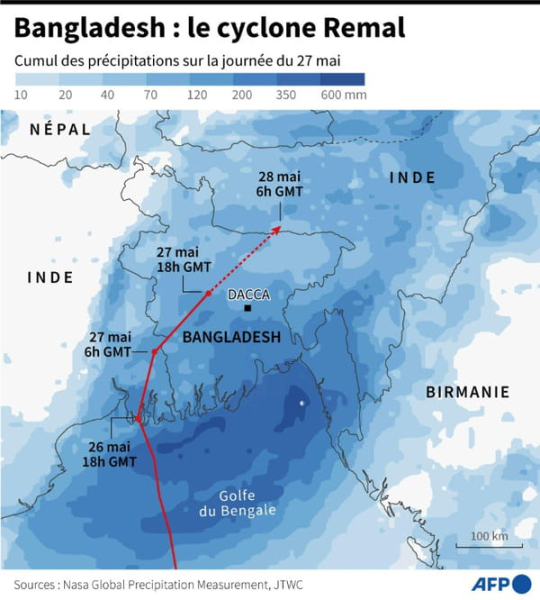The powerful cyclone Remal, which devastated on Monday Bangladesh, wasé one of the longest ever experienced by the country, assuredé On Tuesday, a Bangladeshi meteorologist accused climate change of being at risk. the origin of this exceptional duration. The violent winds, strong waves and heavy rainfall that fell on the coasts of Bangladesh and India starting Sunday evening caused at least 38 deaths on Tuesday, including 21 in India. At least 12 workers died in a stone quarry collapse caused by torrential rains in India's northeastern state of Mizoram, officials said Tuesday. local government officials. In Bangladesh, thousands of homes and embankments were destroyed, towns flooded and at least 17 people died. A woman sits on May 28, 2024 in her house blown away by Cyclone Remal in Patuakhali, Bangladesh © AFP – Munir Uz Zaman Thousands of electricity poles have also collapsed, “and more than 20 million people are without electricity”, Biswanath Sikder, chief engineer of the electricity commission, told AFP on Tuesday. rural electrification of Bangladesh. “In terms of duration, it is one of the longest” cyclones “in the history of the country”, noted with AFP Azizur Rahman, director of the Bangladesh Meteorological Department, an agency attached to the government. According to him, the recent depression hit his country for more than 36 hours, while the last record, which dates back to 2009 with Cyclone Aila, lasted around 34 hours. – Protection of mangroves – Houses damaged by Cyclone Remal in Patuakhali, Bangladesh on May 28, 2024 © AFP – Munir Uz Zaman Cyclone Remal would also have formed more quickly than almost any other observed in recent decades. “It took three days for it turns into a violent cyclone due to low pressure in the Bay of Bengal (…) Usually (…) it takes seven to eight days”, details Azizur Rahman, who sees “the impact of climate change” in this phenomenon. In total on Monday in Bangladesh, “3.75 million people were affected (…) 35,483 homes were destroyed by the cyclone and 115,992 damaged”, according to Bangladeshi Minister for Disaster Management Mohibbur Rahman. Map showing the trajectory of Cyclone Remal and cumulative precipitation for the day of May 27, 2024 © AFP – Nicholas SHEARMAN Nearly a million people in both countries fled inland for safety, but many people preferred to stay behind to protect their homes. Cyclones have killed hundreds of thousands of people in recent decades in Bangladesh and the number of storms hitting its densely populated near-sea-level coasts has risen sharply, passing from one to three per year. According to the Bangladesh Meteorological Department, the vast mangrove forest of the Sundarbans, straddling India and Bangladesh and where throw the Ganges, Brahmaputra and Meghna rivers into the sea, helped stem part of the disaster. But the International Union for Conservation of Nature (IUCN) warned in May that half of the world's mangroves were at risk of eventually disappearing due to climate change, deforestation and pollution. All rights of reproduction and representation reserved. © (2024) Agence France-Presse




